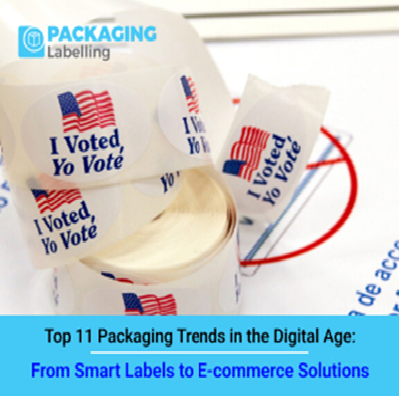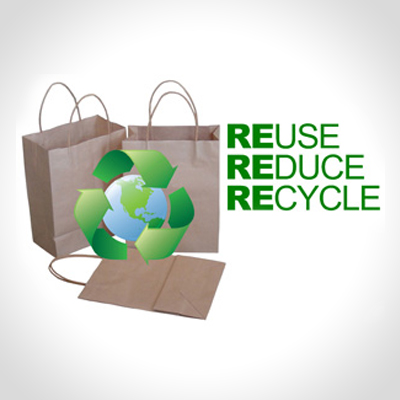Top 11 Packaging Trends in the Digital Age: From Smart Labels to E-commerce Solutions

Introduction:
In our rapidly evolving world, where technology is advancing at an unprecedented pace, the methods we use to package our products are undergoing a transformation. Packaging, once a straightforward method of safeguarding goods, has now evolved into a potent instrument that enables businesses to engage with customers effectively and enhance their operational efficiency. This article delves into the current packaging trends in the digital era, encompassing everything from the emergence of smart labels to groundbreaking e-commerce solutions.
1. Smart Labels: Making Packaging Smarter
Smart labels are revolutionizing the way we interact with products. These labels contain embedded sensors and RFID (Radio-Frequency Identification) technology, which can provide consumers with real-time information about the product's freshness, authenticity, and usage. For instance, a smart label on a milk carton can send an alert to your smartphone when the milk is about to expire, ensuring you never waste food again.
Moreover, smart labels are playing a pivotal role in the battle against counterfeiting. They empower businesses by enabling consumers to verify a product's authenticity using their smartphones, thereby safeguarding brand reputation and fostering trust among customers.
2. Embracing Sustainability in Packaging
With the mounting environmental concerns, there is a surging demand for sustainable packaging solutions. Companies are progressively embracing eco-friendly materials such as biodegradable plastics, recyclable cardboard, and minimalist designs aimed at curbing waste. This trend not only benefits the environment but also resonates with consumers who prioritize eco-conscious choices.
Moreover, companies are focusing on reducing the carbon footprint of their packaging processes. This includes optimizing shipping routes to minimize transportation emissions and using energy-efficient machinery in production.
| Also Read:Custom Labels for Brand Identity: Making Your Mark in the Market |
3. Personalization: Tailoring Packaging to Individual Customers
In the digital age, personalization is key to winning over customers. Businesses are using data analytics to understand customer preferences and create customized packaging. From personalized product recommendations to adding the customer's name to the packaging, these personalized touches make consumers feel special and valued.
Take Amazon, a colossal player in the e-commerce realm, for instance. They leverage advanced algorithms to suggest products tailored to a customer's browsing and purchase history. This not only elevates the shopping experience but also leads to increased sales.
4. Augmented Reality (AR) in Packaging: Creating Immersive Encounters
Augmented reality (AR) is revolutionizing how we engage with packaging. Companies are harnessing AR to offer customers immersive experiences. By scanning a product's packaging using a smartphone app, consumers can delve into 3D product demonstrations, virtual try-ons, or interactive storytelling adventures.
This technology is especially popular in the cosmetics and fashion industries, where consumers can virtually test makeup or try on clothes before making a purchase decision. AR packaging not only engages customers but also reduces the likelihood of returns, enhancing the overall shopping experience.
| Also Read: B2B Packaging Trends: What to Expect in the Next Decade? |
5. E-commerce-Focused Packaging: Convenience and Efficiency
With the rise of e-commerce, packaging has taken on new importance. Brands are designing packaging with e-commerce in mind, ensuring products can be shipped safely and efficiently. This includes using smaller, space-saving packaging that reduces shipping costs and environmental impact.
Additionally, easy-to-open packaging designs are gaining popularity, as they enhance the unboxing experience for online shoppers. Companies are also using tamper-evident seals to assure customers of product integrity when purchasing online.
| Also Read: Digital Printing in Packaging: Advancements and Applications |
6. QR Codes: Bridging the Gap Between Physical and Digital Worlds
QR codes have made a comeback in the digital age. They are used on packaging to provide easy access to product information, user manuals, and customer support. Scanning a QR code with a smartphone instantly connects consumers to the digital world, where they can access reviews, instructional videos, and more.
As an example, food packaging frequently incorporates QR codes that direct consumers to cooking instructions or nutritional details, simplifying the process of making informed choices.
7. Interactive Packaging: Engaging the Senses
In a market teeming with options, brands are crafting packaging experiences that captivate the senses. This involves integrating textures, scents and even sounds into the packaging. Consider a coffee bag with a textured surface that replicates the sensation of touching coffee beans, elevating the tactile encounter for consumers.
Scented packaging is also becoming popular, with perfumes and cosmetics using it to provide customers with a sensory preview of the product. These innovative packaging strategies create a memorable and multisensory connection between the customer and the product.
8. Packaging as a Branding Tool: Creating Memorable Experiences
In the era of digital dominance, branding holds immense significance. Packaging serves as a pivotal conduit for communicating a brand's essence and narrative. Enterprises are dedicating resources to craft distinctive and visually captivating packaging concepts that etch a lasting memory in the minds of consumers. Whether through vibrant hues or minimalist aesthetics, these designs establish instant recognition in the digital landscape, where social media wields considerable influence in brand promotion.
9. Packaging for Convenience and Safety: Tamper-evident seals and Child-Resistant Packaging
Consumer safety is a top priority, especially when it comes to pharmaceuticals, household chemicals, and certain food products. Tamper-evident seals and child-resistant packaging have gained prominence in the digital age. Tamper-evident seals ensure that a product remains unopened and secure until it reaches the consumer, assuring them of product integrity. Child-resistant packaging, on the other hand, prevents accidental access to harmful substances, giving parents peace of mind when purchasing items that could be dangerous to children.
10. Integration with Digital Wallets: Streamlining Online Purchases
As digital wallets and contactless payments become more common, packaging is adapting to facilitate seamless online purchases. QR codes and NFC (Near-Field Communication) tags on packaging can link directly to payment gateways, making it easier for customers to make purchases with a simple tap of their smartphone. This integration enhances the overall shopping experience, especially for impulse buyers who want quick and convenient transactions.
11. Sustainability Certification: Transparent Environmental Commitment
To build trust with eco-conscious consumers, many businesses are seeking sustainability certifications for their packaging materials and practices. Certifications like FSC (Forest Stewardship Council), Fair Trade, and Carbon Neutral indicate a commitment to responsible sourcing and environmentally friendly manufacturing. These certifications reassure consumers that they are making socially and environmentally responsible choices when they choose products with such packaging.
Conclusion:
In conclusion, the packaging landscape in the digital age is a dynamic and evolving one. From smart labels to sustainable materials, interactive designs to branding tools, packaging is no longer just a container but a multifaceted tool that can shape consumer experiences and influence purchasing decisions. As technology continues to advance, businesses that adapt to these packaging trends will be better positioned to thrive in the ever-changing digital marketplace.









.jpg)